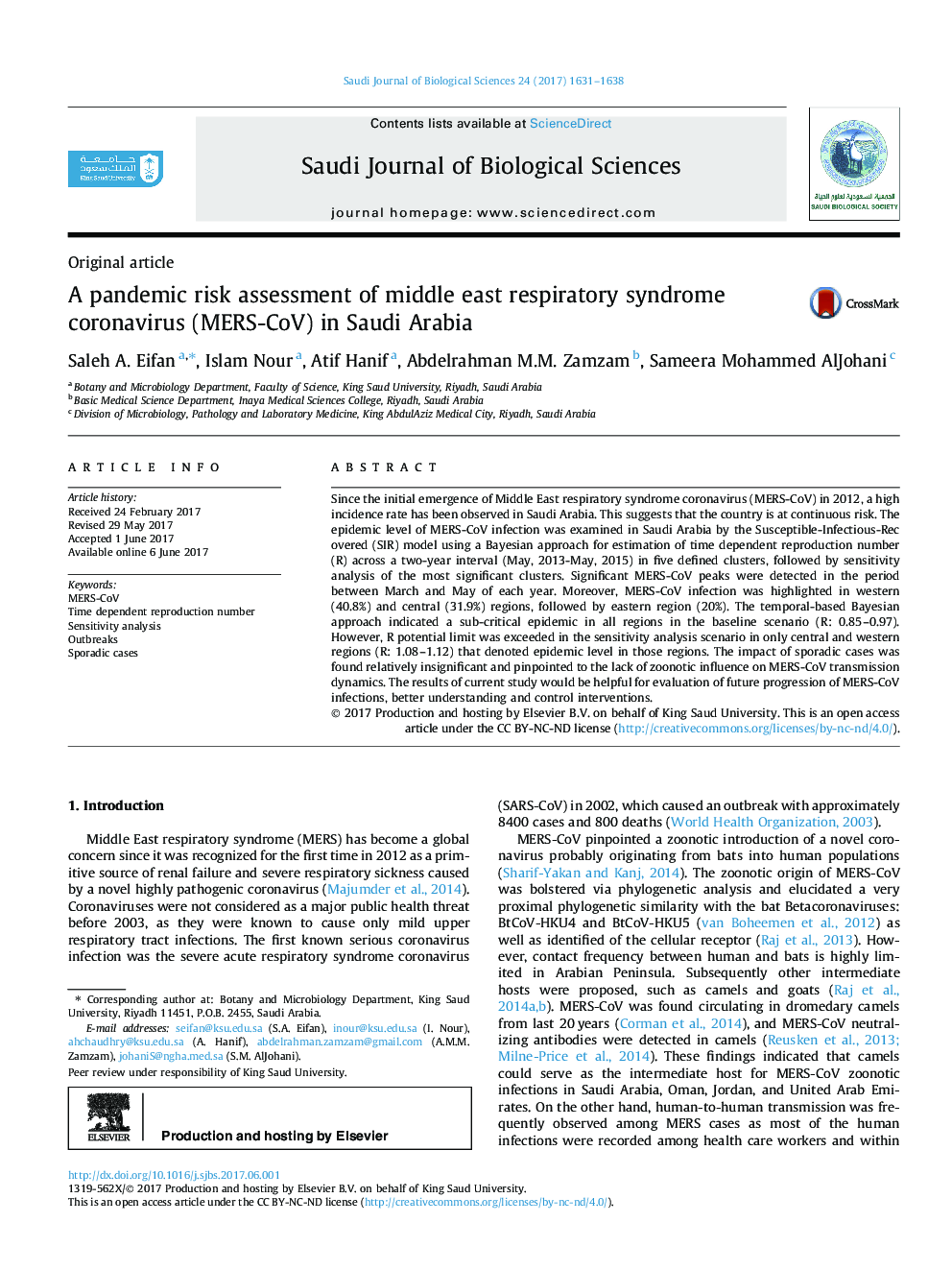| Article ID | Journal | Published Year | Pages | File Type |
|---|---|---|---|---|
| 5745423 | Saudi Journal of Biological Sciences | 2017 | 8 Pages |
Since the initial emergence of Middle East respiratory syndrome coronavirus (MERS-CoV) in 2012, a high incidence rate has been observed in Saudi Arabia. This suggests that the country is at continuous risk. The epidemic level of MERS-CoV infection was examined in Saudi Arabia by the Susceptible-Infectious-Recovered (SIR) model using a Bayesian approach for estimation of time dependent reproduction number (R) across a two-year interval (May, 2013-May, 2015) in five defined clusters, followed by sensitivity analysis of the most significant clusters. Significant MERS-CoV peaks were detected in the period between March and May of each year. Moreover, MERS-CoV infection was highlighted in western (40.8%) and central (31.9%) regions, followed by eastern region (20%). The temporal-based Bayesian approach indicated a sub-critical epidemic in all regions in the baseline scenario (R: 0.85-0.97). However, R potential limit was exceeded in the sensitivity analysis scenario in only central and western regions (R: 1.08-1.12) that denoted epidemic level in those regions. The impact of sporadic cases was found relatively insignificant and pinpointed to the lack of zoonotic influence on MERS-CoV transmission dynamics. The results of current study would be helpful for evaluation of future progression of MERS-CoV infections, better understanding and control interventions.
